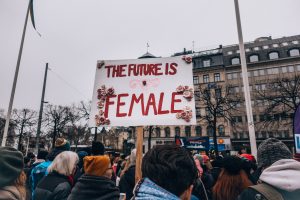The Brazilian Association of Investigative Journalism (Abraji) has just published an unprecedented study on gender violence against journalists, carried out with the support of UNESCO’s Global Media Defence Fund.
According to the survey, 127 journalists and media were targeted by 119 cases of gender violence, of which women journalists (cis and trans) represent 91.3% of victims.
The report “Gender violence against journalists” also points out that, in 2021, media professionals were targeted by 45 attacks using gender, sexuality or sexual orientation as a reason for aggression.
“Stigmatizing speeches”, narratives that use verbal aggressions to harass and discredit journalists, represent 75% of the episodes identified by Abraji.
Another data reveals that 71.4% of insults originated or were reflected in virtual environments, such as the social network Twitter. The main identifiable aggressors were men, corresponding to 95% of abuses on and off the internet.
Abraji’s report monitored social networks as propagators of aggression against press professionals and recorded 57 systematic attacks involving users.
Political coverage
The report found that 60% of recorded attacks were motivated by political coverage, and 52% of identifiable attackers were state actors.
Even the coverage on health was crossed by political issues: in 80% of the cases in which “health” was the main topic related to the attack, politics were present as a background – since hostility against journalists and communicators was chiefly inflamed by opponents of social distancing measures and control of the pandemic, anti-vaxxers and groups that accuse the Brazilian press of conspiring against the administration of Jair Bolsonaro.
The main attackers were, respectively, Jair Bolsonaro, Carlos Jordy, Carlos Bolsonaro, Tercio Arnaud Tomaz, Eduardo Bolsonaro, and Rodrigo Constantino.
The intense participation of government actors in attacks on the press and journalists shows recent trends in the so-called autocracies, democracies led by authoritarian rulers.
Research data show that government authorities and officials linked to state powers initiated 69% of episodes of violence with more than one aggressor.
Read also
Feminist media in Latin America expand voices in the media ecosystem by reporting with a gender perspective
Use of social networks
In 52% of the cases with multiple aggressors, there was a tendency of linkage between these authorities and networks of Internet trolls.
Public officials started the attacks and organised or semi-organised networks of users amplified them, reproducing the same content or often the same terms, generating a stacking effect of abusive messages that affects Brazilian journalism.
It shows the use of digital communication platforms and social networks as tools to promote massive attacks and undermine the credibility of professional journalism.
Some journalists, such as Daniela Lima, Juliana Dal Piva, Mônica Bergamo, Patricia Campos Mello, Amanda Klein, and Vera Magalhães suffered several attacks in the same year.
In 68% of the 119 cases, according to the Brazilian Investigative Journalism Association, the attacks originated in the digital environment.
Most of these cases (93%) were stigmatising discourses (verbal attacks made publicly intending to defame and discredit the victim), in addition to threats and restrictions on the Internet.
Reporters and commentators
The survey also determined the profile of the victims and their performance in the press. Hostilities are predominantly directed at reporters and commentators (85.7%).
The most attacked professionals work on television (47%); printed native newspapers (20.1%); and digital native newspapers (14.3%), as pointed out by the project’s online platform.
The Southeast region leads the number of occurrences, with 66.4% of attacks, followed by the Northeast (12.6%) and Midwest (11.7%).
“The constant attacks of gender violence against journalists in the country reflect the delicate moment we are experiencing. Our report gives visibility to the problem we follow daily. Our mission is to join forces and, based on this data and indicators, seek solutions,” said Leticia Kleim, Abraji’s legal assistant and coordinator of the report.
Kleim says that the acceptance of attacks makes it difficult to draw a portrait of this type of violence.
“The report highlights that these episodes are a form of violence that adds censorship of press freedom to macho or LGBTphobic attacks and should not be accepted as normal”, she added.
The full report is here.
Read also
https://mediatalks.uol.com.br/en/2022/02/11/more-than-two-journalists-murdered-per-week-worldwide-in-january-seven-of-those-in-latin-america/






